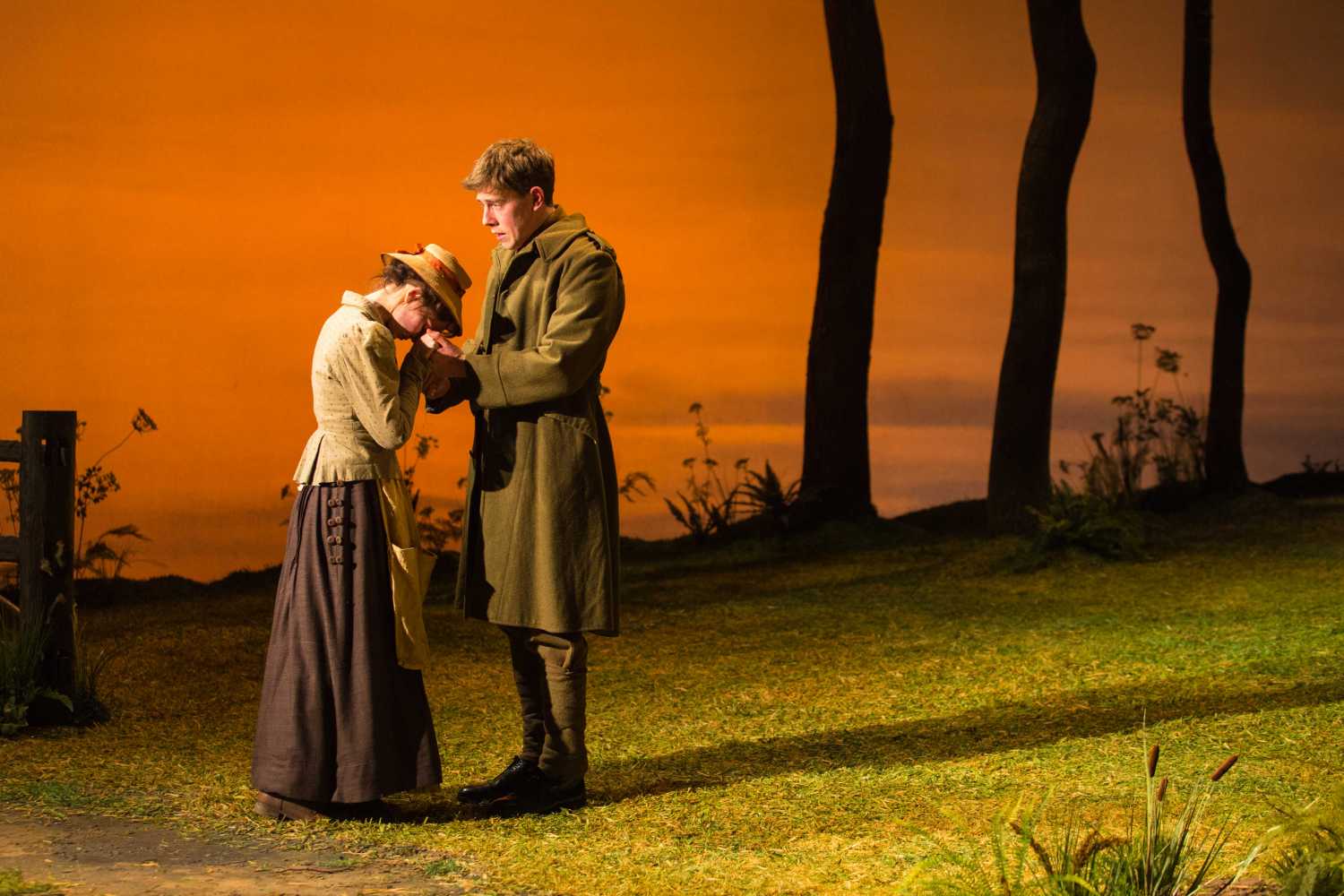White Light reaches Echo’s End in Salisbury
- Details

Echo’s End marks Howard’s fifth production at the Salisbury Playhouse. He comments, “Salisbury is a great venue and this is a brilliant new play that tells a story about that part of the world. The entire play is set outside on the Salisbury Plain, so one of the main requirements was to achieve a sense of natural light and the epic undulating scale of that area at different times of day.”
As with most of his designs, Howard had to work closely alongside the set design, which in this case reflected outdoor Wiltshire. He adds, “A major element of Tom Rogers’ design was a 14-metre-wide printed cloud cyc at the back of the stage which allowed us to create a wide variety of different looks for the eight scenes, ranging from dull, clement overcast grey days, to strong, deep saturated sunsets. This was also useful for the transitions between scenes as it provided a really great and varied backdrop for the company to be silhouetted against.”
Prior to the production opening, Howard visited WL’s Wimbledon base where he was able to experiment with a range of fixtures before adding them to his rig. He comments, “WL were very helpful in letting me come down to have a look at the Robert Juliat Dalis 860 units and demonstrate them to ensure they were suitable for the show. Using new equipment is sometimes a bit of a frightening thing so it was really great to be able to see them beforehand.”
For the rest of his rig, Howard drew on WL’s extensive inventory to ensure he had every fixture he required. He comments, “I drew TW1s overhead and front of house which allowed for flexibility and provided the large coverage needed for such an expansive set. The cyc was bounced from behind using the Robert Juliat Dalis. These offered bright, sophisticated colour mixing and high quality fades meaning they were the ideal fixture for this purpose.
“Jon Roache, who programmed the show, suggested we split each unit into four to allow us to apply gradients and colour swipes to the cyc to refine the transitions and allow blends of subtle pastel shades but also really great, strong colour. Overhead the workhorses of the rig were two 5kw fresnels with scrollers which worked with the cyc as a sort of ‘first layer’ for each scene.”
(Jim Evans)












